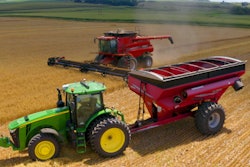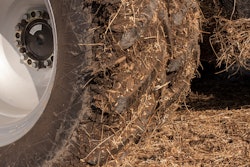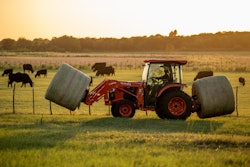As the winter weather breaks, all attention turns to the rush of spring field activity. And no one wants a breakdown when you are rushing the next weather front or operating on a tight timeline. That’s why an ounce of prevention before you bring equipment out of storage can help alleviate those breakdown headaches.
Nowhere is that more critical that your farm tires.
Experts say it can start as something as simple as checking tire pressures. “We talk with our technicians and the first thing they mention is tire pressure,” says Scott Sloan, ag product manager, Titan and Goodyear Farm tires. “With all the flurry in the spring, far too many producers simply look at a tire and think the pressure is good enough. More often than not, you aren’t running the correct tire pressure.”
Poor performance, compaction and increased wear are just some of the reasons a tire gauge can be your most valuable tool in the spring. “I always ask that if you check the fuel and the oil every morning, check the air pressure,” Sloan says. “We stress that a tire gauge is a valuable tool that should be used on a regular basis.”
It can be a bigger issue the bigger the tire. “A few pounds of pressure can make a huge difference in your tire’s performance, and that’s not something you can see with the naked eye,” Sloan says.
Spring also means equipment may be doing several different chores, even throughout the day. Ensuring tire pressures are optimized for each activity is imperative. For instance, a common problem is with tractors that may see loader work one day, and field work the next. Taking the loader off the tractor changes the tire pressure needs, so adjustments need to be made for optimal performance.
It also can be a compromise. For instance, hauling a planter to a field the tongue weight might mean an optimal tire pressure of 23 PSI. However, once that planter is unfolded and in the field, you may only need a tire pressure of 9 PSI. “That’s a significant difference, and it takes time to reduce and increase tire pressure … often time producers don’t have,” Sloan says. “Producers compromise on the pressures they run. It’s important to know these factors impacting tire performance and making decisions before you are in the field.”
Sloan says this is one reason why central inflation systems are becoming more popular. “It’s a more efficient way to get to the correct tire pressures, which helps boost tire performance and increase tire life,” he says.










